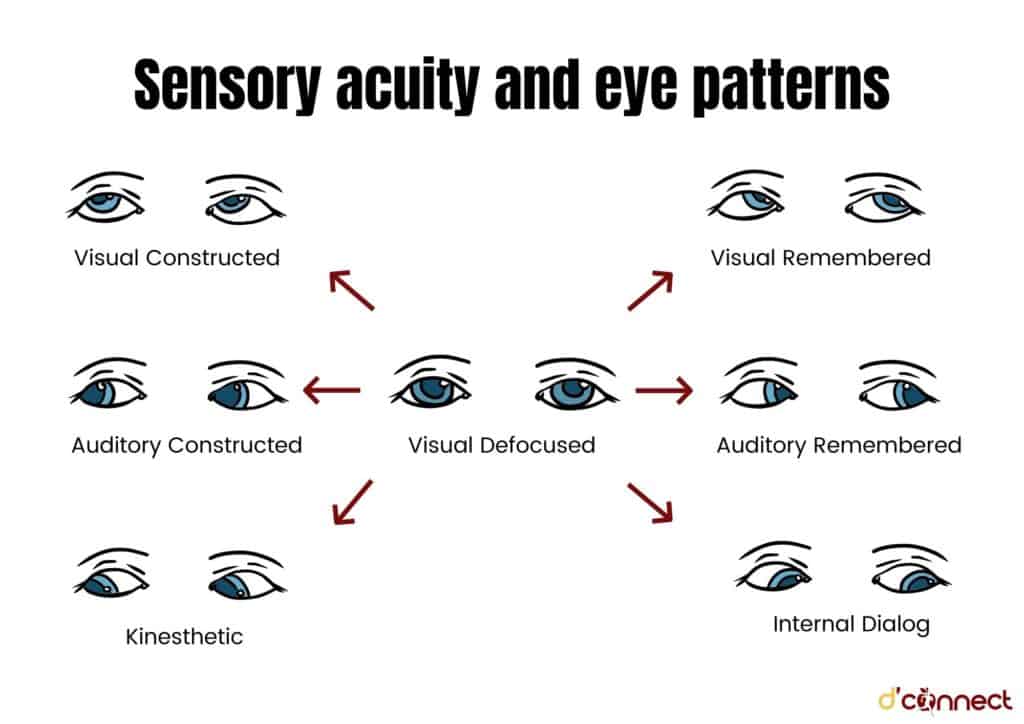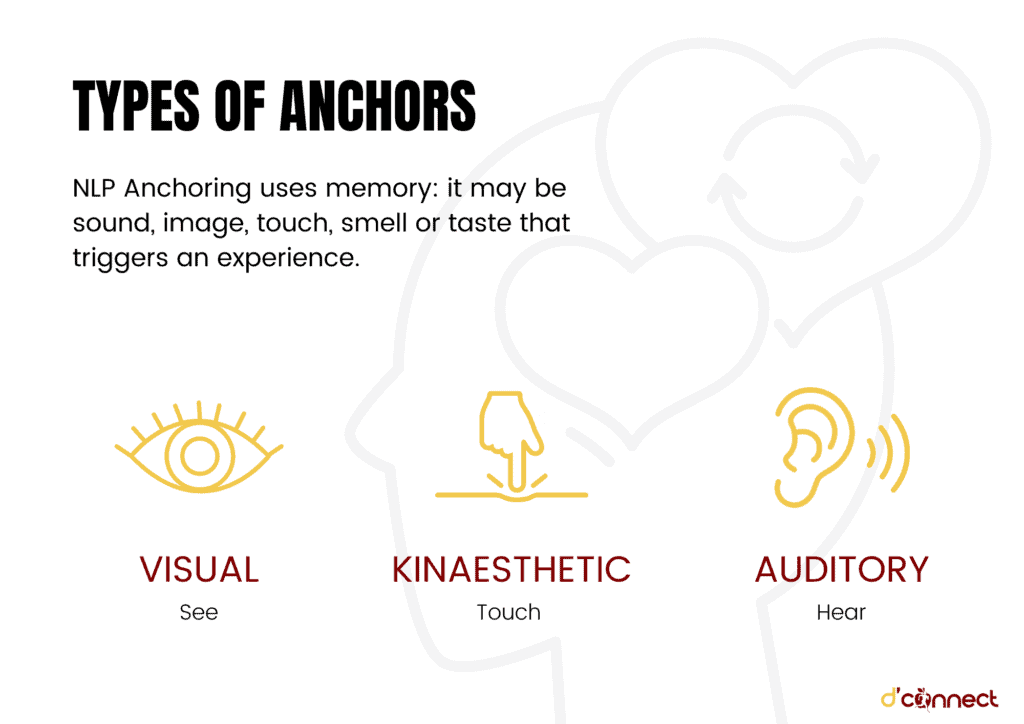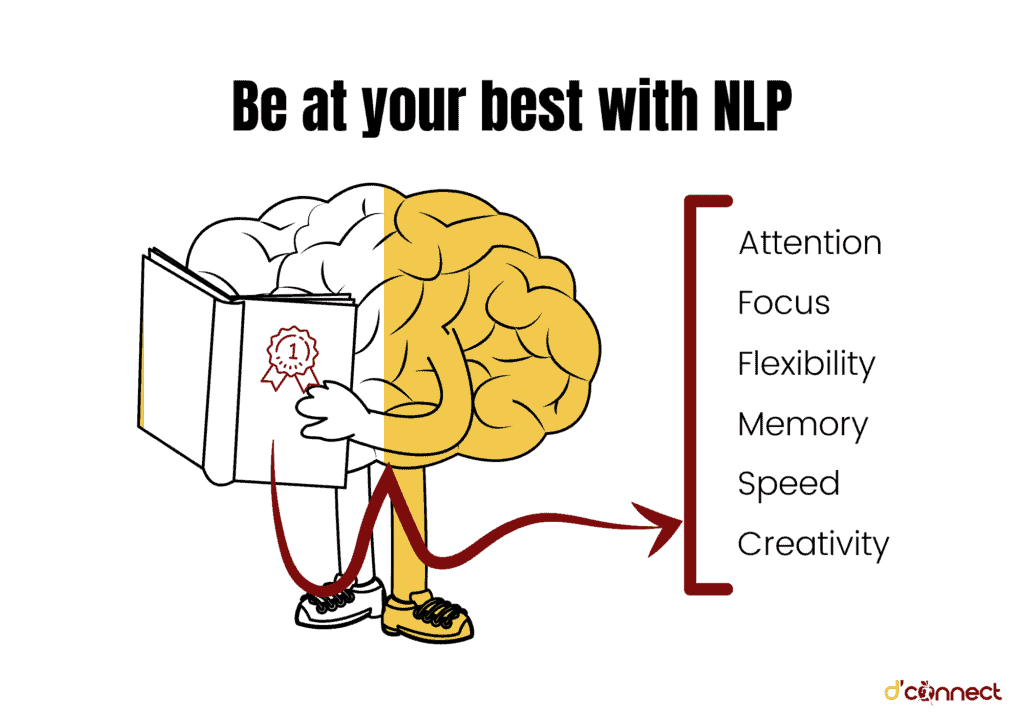
Christine Walter
Hypnotherapist, Life Coach, mBit Master Coach and NLP Master Practitioner
Note — The article was checked and updated July 2023.
Neuro-Linguistic programming (NLP) is a set of psychological methods and techniques that are used for personal development and improvement, and assist to take control of the mind and thought process.
Over the years, NLP has grown and many techniques have developed such as:
- NLP Presuppositions
- Sensory Acuity
- Neurological Levels
- Well Formed Outcomes
- Ericksonian language patterns and metaphors
- Meta Model
- Anchoring
- Framing and Reframing
- Strategy Elicitation and Design
Today, neuro-linguistic programming is used in health, wellbeing and education fields as well as business.
To understand how neuro-linguistic programming started and developed over the last 5 decades, we need to look at its history.
History and start of Neuro-Linguistic Programming
Neuro-Linguistic Programming is an art of communication and influence, and modelling excellence. NLP arrived in the 70’s and was originally centred around behaviourism. Later it developed more into how our beliefs, values and identities impact our results and what we do.
Relationships, communication and our interaction with both our conscious and unconscious mind is central to NLP. NLP is a subjective science – an important point to remember as no two people are the same.
NLP as a package, was created by John Grinder and Richard Bandler. John Grinder was a Professor in Linguistics at the University of California, Santa Cruz, and Richard Bandler, a student in Psychology there.
Bandler and Grinder studied and modelled therapists who were leaders in their fields to note the patterns of what each was doing, and how they were doing it to get such great results. The key people studied were Milton Erickson, Fritz Perls, Virginia Satir and Gregory Bateson.
NLP is an art of communication, influence and modelling excellence
Joseph O’Connor and Joseph Seymour, authors of Introducing Neuro Linguistic Programming write:
“If NLP were ever to be presented in a three-minute seminar, it would go something like this… Firstly, know what you want, have a clear idea of your outcome in any situation. Secondly, be alert and keep your senses open so that you notice what you are getting. Thirdly, have the flexibility to keep changing what you do until you get what you want…”
If we break NLP down, we can notice the three key parts to it:
N (neuro) – the neurology of our body and our nervous system.
We have learning neurons in our body, not just our brain. Our nervous system coordinates actions and sensory information throughout our body which respond to internal and external stimuli.
L (linguistic) – verbal and non-verbal communication (internal and external).
P (programming) – this stems from the 70’s when computers were becoming more prominent. The programming of computers was likened to the programming of our behavioural patterns and strategies that we use to create our outcomes.
Research and Science behind Neuro-Linguistic Programming
NLP has had limited research, in limited fields and is somewhat difficult to research because of the variation in methods and application. The research that has been completed varies. It is considered a pseudo-science and appears to hold very limited regard in that field.
A study completed in 2009 of 106 psychotherapy clients demonstrated a significant decrease in clinical symptoms and an increase in quality of life within the participants of the therapy group. It was found to be comparable to established effects of Cognitive Behaviour Therapy.[1]
In saying that, another study completed in 2012 of 10 experimental studies could not conclusively show improved health-related outcomes. It did note that this was because of the “limited quantity and quality of NLP research rather than robust evidence of no effect.”[2]
An article in the Science Times in 2020 noted two interesting points. It likened the NLP way of identifying a person’s resources and strengths to achieve certain goals to the positive approach promoted by positive approach researchers, naming Abraham Maslow as one of these.[3]

NLP therefore could be considered as a suite of techniques and studies that are accepted within modern therapeutic, business, health, wellbeing and education fields.
To example this further:
- NLP promotes the change of physiological state to change behaviour to have a different outcome. Research promotes that changing posture changes a person’s feelings.[4]
- NLP acknowledges that the body and mind are interconnected and therefore thoughts affect our physiological state as well as our psychological state. Knowing this offers the opportunity to change.
- NLP promotes the value and necessity of good communication. There is much research around this in both relationships and in business. NLP offers presuppositions and methodology to enable this to occur as well.
- Anchoring, stacking, chaining and collapsing anchors is based on the works of people such as Edward Thorndike, Ivan Pavlov and BF Skinner.
- Values are important drivers for people. They are also a key part of organisations and can provide motivation and direction.[5]
So while NLP may have inconclusive research, the basis on which it is created and implemented, as well as the different teachings and techniques that sit within the title, can be found to have reasonable study around it.
As with all matters, a large amount of the responsibility for change is with the person themselves. The implementation of quality NLP techniques is as good as the practitioner.
This can also be said for all counselling, therapy, coaching, stewardship and teaching.
What can NLP be used for and how does it help?
The uses of NLP are far and wide and NLP is designed for all aspects of life. From enhancing communication, influencing, achieving our goals to changing our behaviour and beliefs. NLP can be used for fears and phobias, anxiety, confidence and self esteem. It is useful in business and education.
Experienced NLP practitioners use it for treatment of PTSD and trauma.
RELATED — Traumatic Event: how to recover and get back to life
NLP in Coaching and Therapy
NLP offers a variety of ways to affect a person’s cognitive thinking and therefore way of being. It provides direct techniques to safely revisit past events as well as excellent formats to plan and move toward a more resourceful future.
It aims to help the client to understand how they view and operate within the world. The insight intends to find new and more resourceful ways of doing so.
NLP offers awareness of communication in order that the NLP Practitioner can gain better understanding and communicate more effectively with themselves as well as others.
NLP in Health, Wellbeing and Self Development
Every aspect of NLP assists in these areas. From the presuppositions, language patterns, internal programming to limiting beliefs and behaviours, NLP offers techniques to bring awareness and therefore change to those that want to implement positive change in their lives. It is an effective tool for sports performance both individually and in teams.
NLP in Education
NLP can provide outcome strategies and approaches for self-motivation and the motivation of others. It offers opportunities to develop rapport for effective communication, techniques for developing flexibility in situations and awareness of others and models of language patterns.
The presuppositions offer a new lens in which to view students and their behaviour while offering some responsibility for this with the teacher as well.
NLP in Business and the Workplace
In business, NLP offers a framework with which to communicate, and work with people on a day to day basis, including opportunities to view the world from the other’s perspective. It provides sounds, concise strategies and techniques to find common ground to resolve conflict and move forward.
NLP essentially can be implemented in every aspect of the modern world. For the person who incorporates NLP into their everyday life, their outlook on life and their lives can change forever. This is because when it is embraced, NLP is utilising the intrinsic learning systems (brains), the nervous system which impacts how we relate, how a person responds and it aids change.
Internal language patterns also impact neurology and the nervous system. Thoughts release chemicals into the body, stimulating the nervous system and affecting physiology.[6] Stem cell scientist Bruce Lipton argues that unresourceful thoughts can indeed create disease and illness within the body.
By changing internal dialogue, the chemical reaction within the body changes. Research in this area alone is constant currently.
External language patterns, responses and habit of building rapport help to create more useful conversations for better understanding or outcomes.
NLP, when embraced, offers principles in which to view the world. These are called presuppositions which help to reframe how a person might view an event or the world.
NLP utilises the natural states of people to create resourceful outcomes. Appropriate physical state changes behaviour and promotes obtaining the best results.
NLP is laced with many techniques which are added to frequently. For example, a “Belief Change Cycle” is about changing a limiting belief. What that limiting belief is and how it impacts a person is totally related to the individual.
It is good to note also that a good ‘NLP based’ conversation, asking questions and being curious to the cause and effect can be as valuable as a NLP technique.
Neuro-Linguistic Programming key methods and techniques
Contribution to NLP has continued since its conception. The basics of an NLP Practitioner course though, as directed by the large NLP Affiliation groups is consistent. Each part of the learning impacts another part.
RELATED — Neuro-Linguistic Programming: Key Methods and Techniques (Part 1)
Some of the key learnings taught in a Practitioner course are:
NLP Presuppositions
A presupposition is a linguistic assumption. Because NLP is purposeful in its intent, Bandler and Grinder established a set of presuppositions which offers the opportunity to be more flexible in daily life and to adopt a proactive, modelling for excellence strategy.
This means that an NLP-er doesn’t accept things at face value but will delve or explore what is being said or occurring from a curious, exploratory mindset.
NLP Model of Communication
The learning of this model is a foundation to knowing NLP because we cannot not communicate. To understand the process of how a person makes sense of the environment and return communication from this allows the NLP Practitioner to better communicate and attempt to understand the “map of the world” from which the other person is communicating from.
Prime directives of unconscious mind
The unconscious mind’s function is to serve us and to keep the individual alive. It is where we store all of our memories, emotions and beliefs. Most of the time people are unaware of operating from unconscious self. Often, it is simply like being on autopilot.
To offer a comparison, the conscious mind is the mental processing of which a person is aware of, such as logical thinking and intentioned actions.
It is known that much of what affects a person as an adult can relate to childhood experiences, a time when conscious thinking is developing.
Sensory acuity and eye patterns
This model focuses on observing what is occurring for the person being engaging with. Subtle unconscious changes within physiology help the observer to notice internal physiological changes.
Generalisations about patterns of behaviour assists the practitioner to understand how a person accesses information from their own internal storage. These are from the main senses of visual, auditory and kinesthetic.
Olfactory and gustatory are the other two senses although in the use of sensory acuity and eye patterns these do not feature.

From primal beginnings people are naturally wired to notice small changes in expression and movement, particularly in communication. This was a key aspect that kept humans safe. Utilising the research, NLP uses sensory acuity to notice the subtle changes in self and others to aid better understanding.
Dilation of pupils, breathing changes and body symmetry are important for sensory acuity
Rapport
The importance of rapport has a large emphasis in NLP. It is easy to notice how comfortable conversation and communication is when people are in rapport. People often describe such interactions as natural, feeling right or harmonious.
Conversely an interaction with little or no rapport is described as uncomfortable, awkward or even painful. What is obvious is that a conversation with people in rapport will be more pleasant and probably last longer than a conversation where people are not in rapport.
Dilts Neurological Levels
Dr Robert Dilts contributed to NLP in a number of ways. A significant contribution was the development of Neurological Levels.
This model assists to notice on which level a person is speaking, believing and behaving from.
The environment can influence behaviour, beliefs, values and identity
Well Formed Outcomes
Creating Well Formed Outcomes to be able to achieve our goals is a key part of NLP. This is based on the five steps to success[7]:
- Know what you want clearly and utilise senses in this
- Take action
- Be flexible in the approach
- Utilise sensory acuity
- Maintain a physiology and psychology of excellence.
A well formed outcome includes a variation of the SMART goal format.
The clearer and more specific the goal, the easier it is to achieve it
Chunking
The art of being curious is intrinsic in NLP. By being curious there is opportunity to view aspects of events or outcomes from different perspectives. It also offers the opportunity to direct curiosity. In NLP this is known as chunking.
For instance, to “chunk up” the NLP Practitioner is searching for high values which will offer motivation for success or understanding what is holding an unwanted way of being in place.
Ericksonian language patterns and metaphors
This is also known as the Milton Model. Milton Erickson was a psychiatrist and psychologist who transformed hypnotherapy. Milton’s learnings mainly came from the challenges he had in his own personal life – dyslexia, colour blindness, tone deaf and almost dying from polio.
RELATED — Neuro-Linguistic Programming: Key Methods and Techniques (Part 2)
Through his own research and experimentation Erickson developed a series of language patterns which connected to the unconscious mind. These language patterns can be found not only in hypnosis today but in marketing, politics and influential language patterns. Examples of these patterns include:
- Cause and effect
- Mind Reading
- Pacing Current Experience
- Utilisation
- Double Bind
- Tag questions
The conscious mind hears the question; the unconscious mind hears a command
Meta Model
Balancing Milton Model is the Meta Model based on the work of Virginia Satir and Fritz Perls, both leading psychotherapists of the time. While Milton Model is “artfully vague” the Meta Model delves deeper into what is being said.
Meta Model helps to identify and ask questions that quickly eliminate the vagueness and identify the root of what is being said.
Anchoring
Anchoring is a technique that utilises the natural states – physical and emotional. The most common is the anchor to be able to stimulate a physical state at will that is resourceful to an outcome.
A very famous example of anchoring, certainly in the Southern Hemisphere would be a haka performed before a sports game.
This performance unites the team (entrainment) and allows each performer to ignite their own strong internal state to be formidable on the sports field. It becomes the trigger that fires the anchor and the state naturally occurs.

Within the term of anchoring there are a variety of different techniques taught. It is possible to create an anchor, collapse anchors, stack, chain or slide anchors, each for a resourceful purpose.[8]
Framing and Reframing
Communication for understanding people, positive influence and good outcomes for self and other people is an important part of NLP.
Framing a conversation, in NLP, encourages the NLP practitioner to position the conversation to a specific context. This allows conversations to flow, for elements of conversation to be discussed from different viewpoints or offer different meanings.
These can be particularly useful in challenging conversations and business meetings to open up conversation and overcome sticking points.[9]
Reframing operates from the presupposition that humans place meaning on events. It is a natural part of human framework in order to make sense of the world. Defining things or events into good or bad, right or wrong, or what it means to the individual from their own map of the world.[10] The meaning of the event is the frame an individual puts on it.
Strategy Elicitation and Design
Strategy relates to the programming part of NLP.
A strategy is a specific arrangement of external and internal experience which will consistently produce a specific outcome. It can be as simple as the act of getting ready for bed to an unconscious, habitual way of being in relationships.
Utilising a NLP strategy elicitation model the NLP practitioner will ask the client to notice the trigger which creates the behaviour. They will then delve into the internal and external experiences of the strategy and how the strategy is finished.
This offers the ability to contextualise the process and notice it from an observer’s position.
Neuro-Linguistic Programming in the workplace
The workplace involves people and NLP has a wonderful place within the work environment. A 2020 study noted that the NLP skills as a communication tool were very important within a business context.
In particular, it cited rapport, including leading and pacing, predicates sensory acuity, meta model questioning, understanding strategies of others and communication – both externally and internally.[11]
The Neurological levels also play a part here. In business this model is represented in:
- Mission and Vision statements = the identity of the business
- Philosophy, culture, company values and reward systems = values and beliefs of the business
- Commitment to service, position descriptions, training, employee processes = capabilities, habits and behaviours of the business
- Resources and equipment, work spaces, location and people in the area = the environment of the business.
The identity, values and beliefs of the workplace are in essence the “why” of the business’s existence. Simon Sinek explained it exquisitely in his Ted Talk Start With Why.[12]
Understanding the neurological levels of people as well as a business helps to create culture. It aids recruitment and direction of business. If the information within the neurological levels of the business are not clearly communicated, not followed or if someone does not believe in these, there will be disharmony in the workplace.
Techniques of NLP can be applied specifically into business models. Examples of this are:
- SCORE model (Symptoms, Cause, Outcomes, Resources, Effects). This can be used both in business strategy and individual coaching of employees
- Chunking – the ability to intentionally direct questions creates effective conversations and focused conversations
- Using the Disney Strategy (The Critic) in a meeting can take a creative idea to details on how to accomplish it
- Adopting different perceptual positions allows the practitioner to remove themselves emotionally from an aspect of business and viewing from another person’s perspective and as an observer.
In short, almost all aspects of NLP can be converted successfully and have a place to enhance business.
Tips for practicing NLP at home
NLP can be overwhelming when wanting to be excellent from the beginning, as adults tend to want to be. Miller’s Law notes that the human brain can only take in certain amounts of information at once. This is generally seven pieces of information plus or minus two.
To practice NLP at home, commit to it daily and in true NLP form, observe and be flexible with each of your observations and implementations so you become proficient. No two people are the same so NLP is a subjective science – curiosity is key.
- Start with the presuppositions. Pledge to incorporate these as a part of daily life. Start with the first seven and notice how by embracing them your thinking can change. Notice how other people are living the presuppositions. Notice how relationships change. Recite them to commit them to memory.
- Incorporate a little more each day. Add eye patterns. Once there is an awareness of these they are easy to notice. Watch interviews and observe people talking.
- Practice rapport and sensory acuity in interactions. Observe people as they interact.
- Continue on to include language patterns in your communication, again breaking them down to just a few at a time.
- Develop curious questioning with chunking.
- Listen to conversations, notice where they place on the neurological levels. Ask questions to direct the conversation.
- Write a personal well formed outcome, and practice changing state to create a different behaviour.
- At all times, notice the responses received and what has affected these. As NLP is personally embraced, notice what changes occur and how they occur. Notice the submodalities personally.
The main thing is to focus attention daily on an aspect or aspects of NLP until they become natural and integrated.

There are many short courses available as an Introduction to NLP as well as practitioner courses. Many are now offered on Zoom as well as in the training room. When selecting a course, read the reviews.
The most expensive is not necessarily best and the cheapest is not necessarily worst. Some may teach from a therapeutic approach, others may have a workplace approach.
Review what is required of an accredited course of one of the larger NLP accreditation organisations such as INLPTA or ANLP and cross reference the course being considered. Contact the operator of the course and interview them.
NLP to the writer is not just a certificate of training. To the true NLP Practitioner it is a way of life, a way of being.
It is generic learning at its best – it changes how we “do” being ourselves!
Cognitive Behaviour Therapy and Neuro-Linguistic Programming
Cognitive Behaviour Therapy and Neuro-Linguistic Programming are not the same although both focus on behavioural and sequencing patterns of internal and external perception and the responses deriving from these.
CBT is based on unhelpful thoughts creating unhelpful behaviours which create psychological problems. These thoughts are often created from events in personal life. CBT helps to find ways of coping and deal with the thoughts and their effects, essentially changing the way a person thinks.
RELATED — Types of therapy: which one is right for you? (Part 1)
A CBT practitioner will likely want to know details around the root cause. As noted in research, some aspects of NLP are similar to CBT. A clear difference is that an NLP Practitioner will not require full detail of past events or the root cause in order to assist in finding strategies to create change.
Richard Bandler put it beautifully with “I don’t need to know what the problem is, I just need to know how you do the problem.” In this way the NLPer notices the triggers to create the pattern and sets to intervene with new ways.
Cognitive Behaviour Therapy helps to find ways of coping with thoughts and their effects
As with all aspects of assisting people with cognitive and behavioural change, always work with an ethical practitioner who has a compassionate and humanistic approach and conducts themselves in a truly ethical and professional manner.
As in life itself, when working, helping and supporting others an approach of genuine care, compassion and integrity is paramount.
Change Your Life with Neuro-Linguistic Programming
NLP has been around long enough now for it to be credible. As with everything, there are people who embrace it and those who disregard it. There are arguments that say NLP is not based on research yet, there are millions who have benefited from it.
As a Coach and Therapist utilising NLP regularly, I have witnessed personal change and that of clients. Change is always the responsibility of the person who desires it.
Embracing NLP and taking it on as a framework for life can certainly change it for the better. From personal experience I can confirm this. From improving personal relationships, enhancing communication in the workplace and with others, the ability to change a life is clear.
NLP has helped me to be stronger, to like myself and be happy with who I am. It has provided insights into aspects of life that held me back and affected self work in order to change these permanently.
After many years of striving to be what I thought others wanted me to be, I stand free to be who I choose to be.
As a coach and hypnotherapist, I note that these are things we all want in life – to be free to be oneself and live our lives well.
Related Questions
1. How much does a one hour NLP session cost?
An expected charge would be somewhere between $80 and $300 per hour. When selecting a practitioner, explore the options. Read the reviews and interview the preferred practitioners.
They may even offer a free 30 minute consultation to get to know them. In any relationship, whether work or personal – trust and integrity are paramount.
2. What is the main difference between NLP and meditation?
Mediation is training awareness onto a single thought for the purpose of obtaining a healthy perspective. It offers peace to notice the thoughts and feelings without judgement.
NLP encourages being free of judgement and different perspectives. It is often practiced “on the go” and in the moment. It is intended to be used for purposeful interaction and change.
Christine Walter is a Hypnotherapist, Life Coach, mBit Master Coach and NLP Master Practitioner and a trainer of these modalities. She has her own practise moving between Auckland and Waihi area.
Christine is a founding director of ANZCAL, NZ’s coaching accreditation organisation. You can learn more about Christine at Lodestone.
References
(1) Stipancic, M., Renner, W., Scutz, P., Dond, P. Dond, R.,(2009). Effects on Neuro-Linguistic Psychotherapy on psychological difficulties and perceived quality of life. Retrieved from https://onlinelibrary.wiley.com/doi/epdf/10.1080/14733140903225240
(2) Sturt, J., Ali, S., Robertson, W., Metcalfe, D., Grove, A., Bourne, C.,Bridle, C. (2021). Neurolinguistic programming: a systematic review of the effects on health outcomes. British Journal of General Practice. Retrieved from https://www.ncbi.nlm.nih.gov/pmc/articles/PMC3481516/
(3) Hamilton, E. (2020). The Scientific Rigor of Neuro-Linguistic Programming Studies. The Science Times. Retrieved from https://www.sciencetimes.com/articles/26290/20200701/the-scientific-rigor-of-neuro-linguistic-programming-studies.htm
(4) Matta, C. M.A., Posture & How It Changes Your Feelings. MentalHelp.net. Retrieved from https://www.mentalhelp.net/blogs/posture-and-how-it-changes-your-feelings/
(5) Gorenak M., Košir, S. (2012). The Importance of Organizational Values for Organization. Management, Knowledge and Learning International Conference 2012,p565. Retrieved from https://www.researchgate.net/publication/239807972_The_Importance_of_Organizational_Values_for_Organization
(6) Walter. C. (2021). How to use our Mind / Body connection to do more. Retrieved from https://www.lodestone.nz/how-to-use-our-mind-body-connection-to-do-more/
(7) Walter. C. (2017). NLP Five Steps Success Model. Retrieved from https://www.lodestone.nz/nlp-five-step-success-model/
(8) Walter. C. (2014). Circle of Excellence – enabling you to prepare for success. Retrieved from https://www.lodestone.nz/circle-excellence-enabling-prepare-success/
(9) Walter. C. (2016). Frame that conversation for success. Retrieved from https://www.lodestone.nz/frame-that-conversation-for-success/
(10) Walter. C. (2015). “You are undoubtedly the worst pirate I have ever heard of!” Retrieved from https://www.lodestone.nz/you-are-undoubtedly-the-worst-pirate-i-have-ever-heard-of/
(11) Mostafa El-Ashry, M. DBA, MBA, Bsc (2021)The Importance of Neuro Linguistic Programming Skills as a Communication Tool in the Workplace, p1119-1121. https://www.researchgate.net/publication/348714816_The_Importance_of_Neuro_Linguistic_Programming_Skills_as_a_Communication_Tool_in_the_Workplace#:~:text=Moreover%2C%20neuro%20linguistic%20programming%20skills,her%20actions%2C%20and%20also%20to
(12) Sinek, S. (2009) Start With Why. Ted Talk Youtube.com. https://www.youtube.com/watch?v=2Ss78LfY3nE






